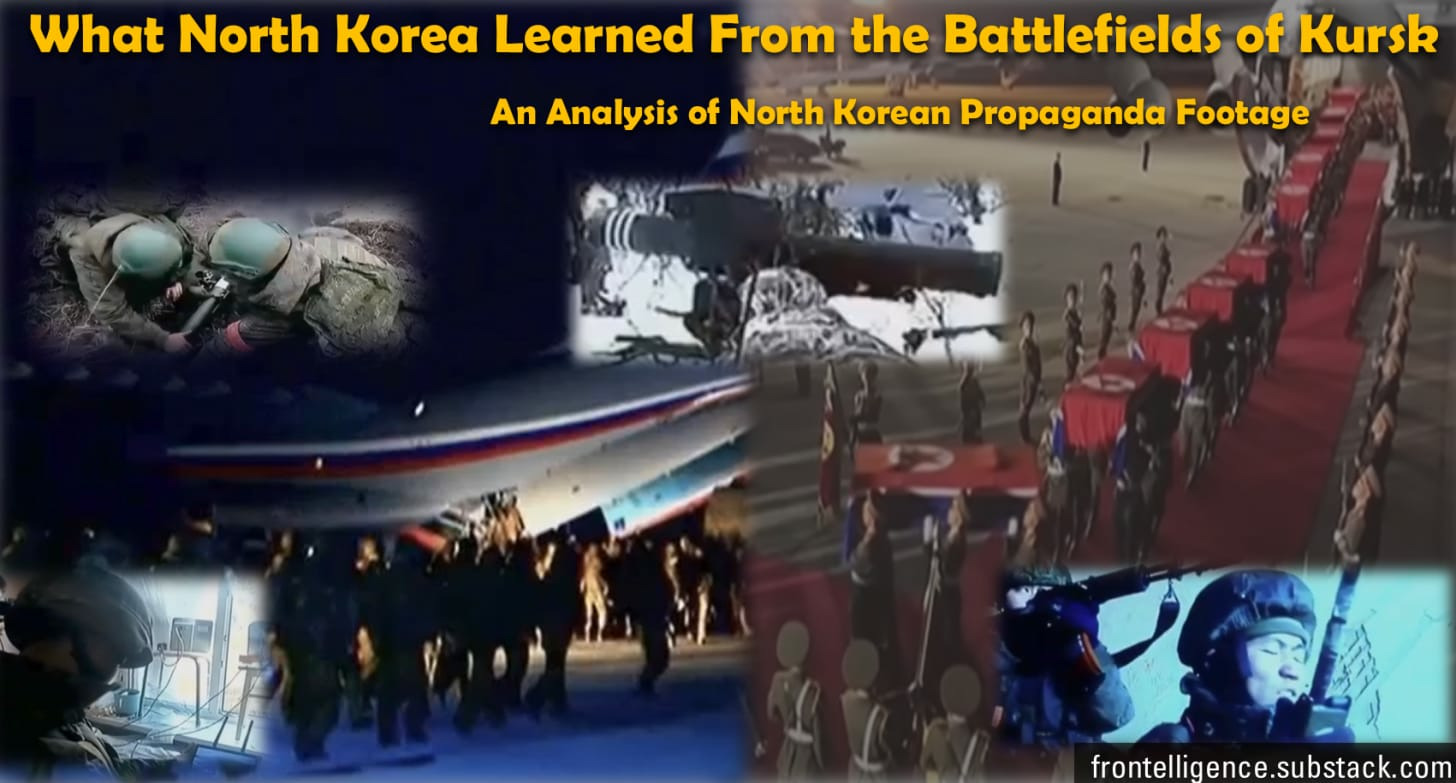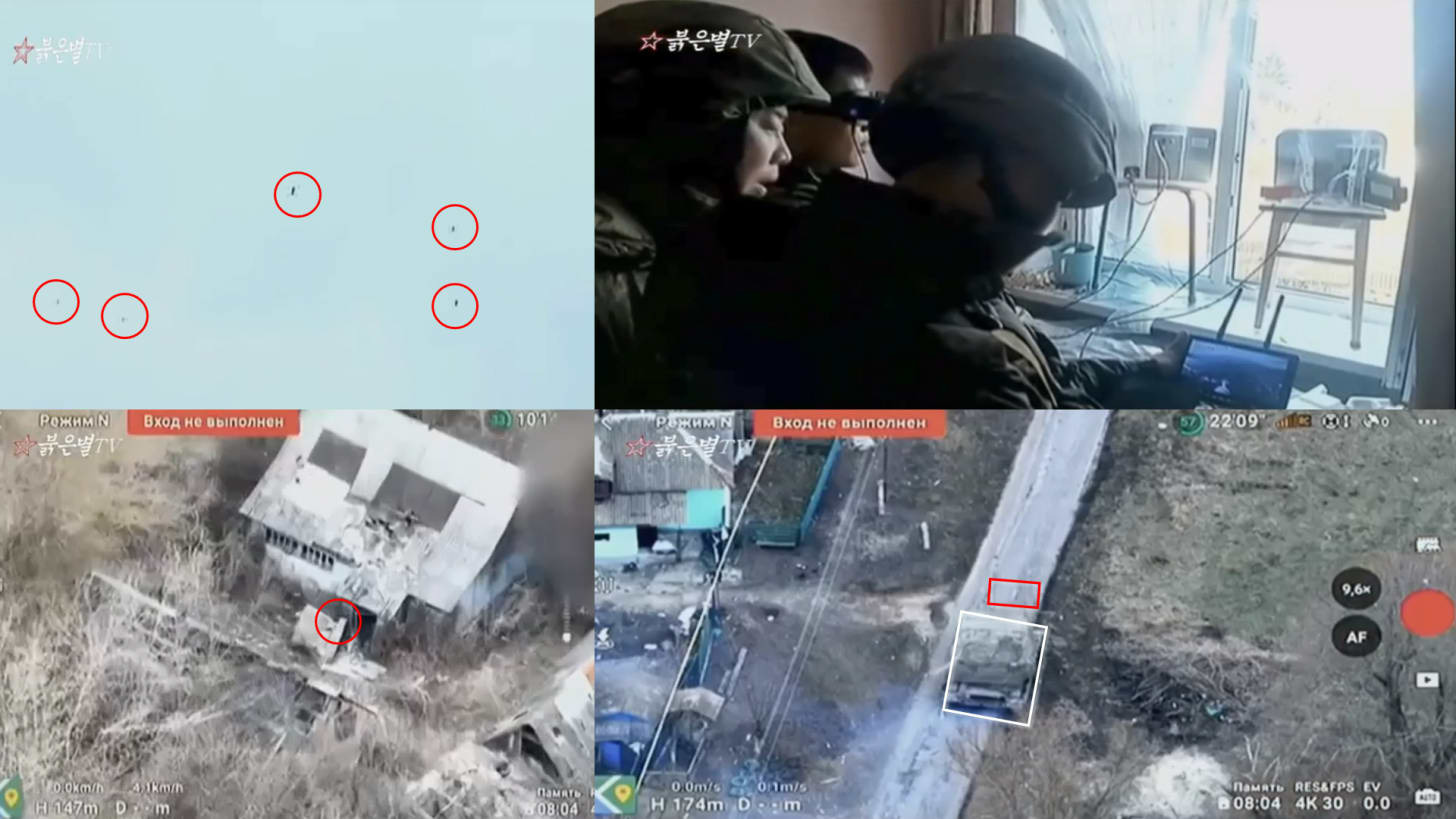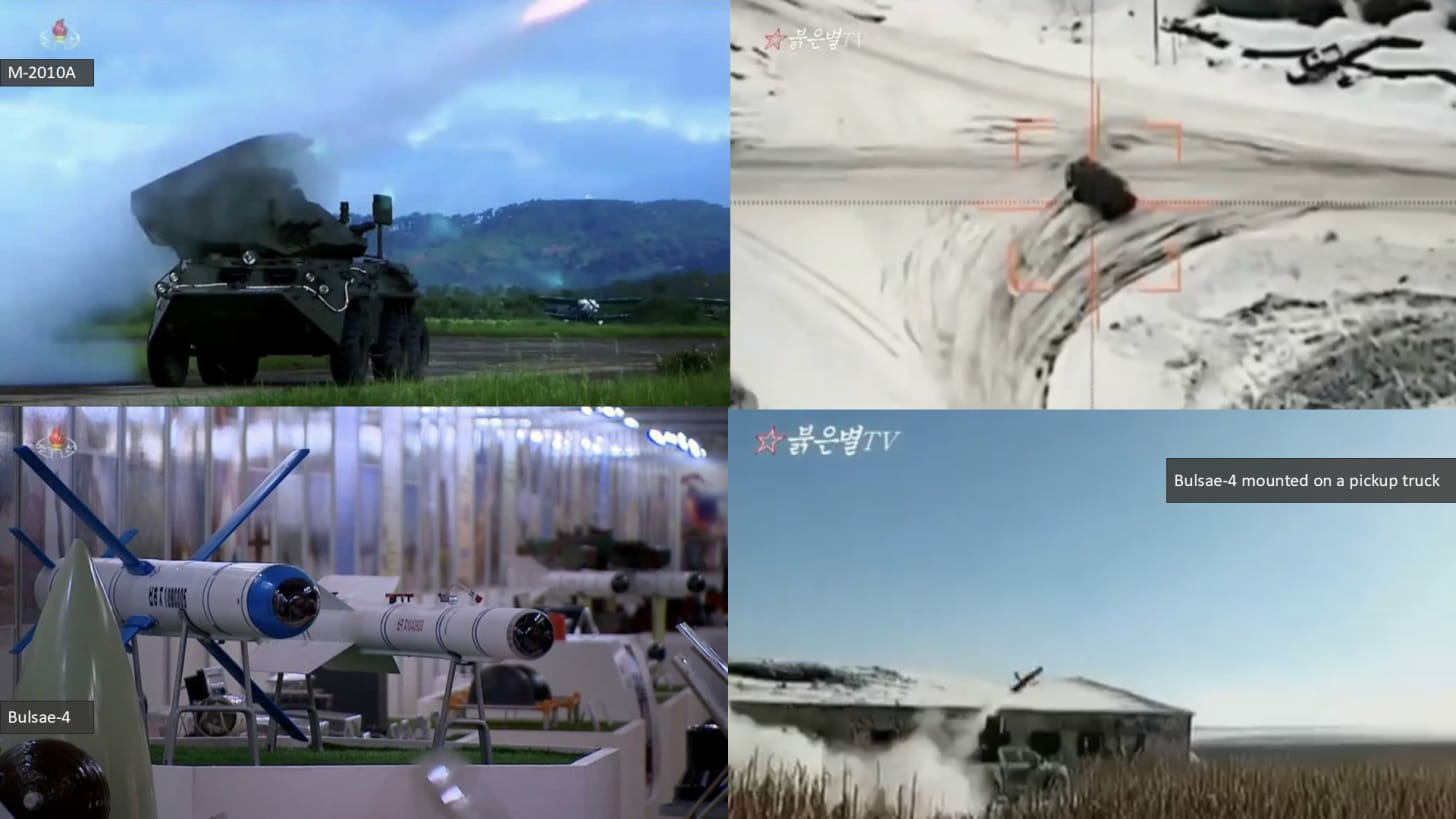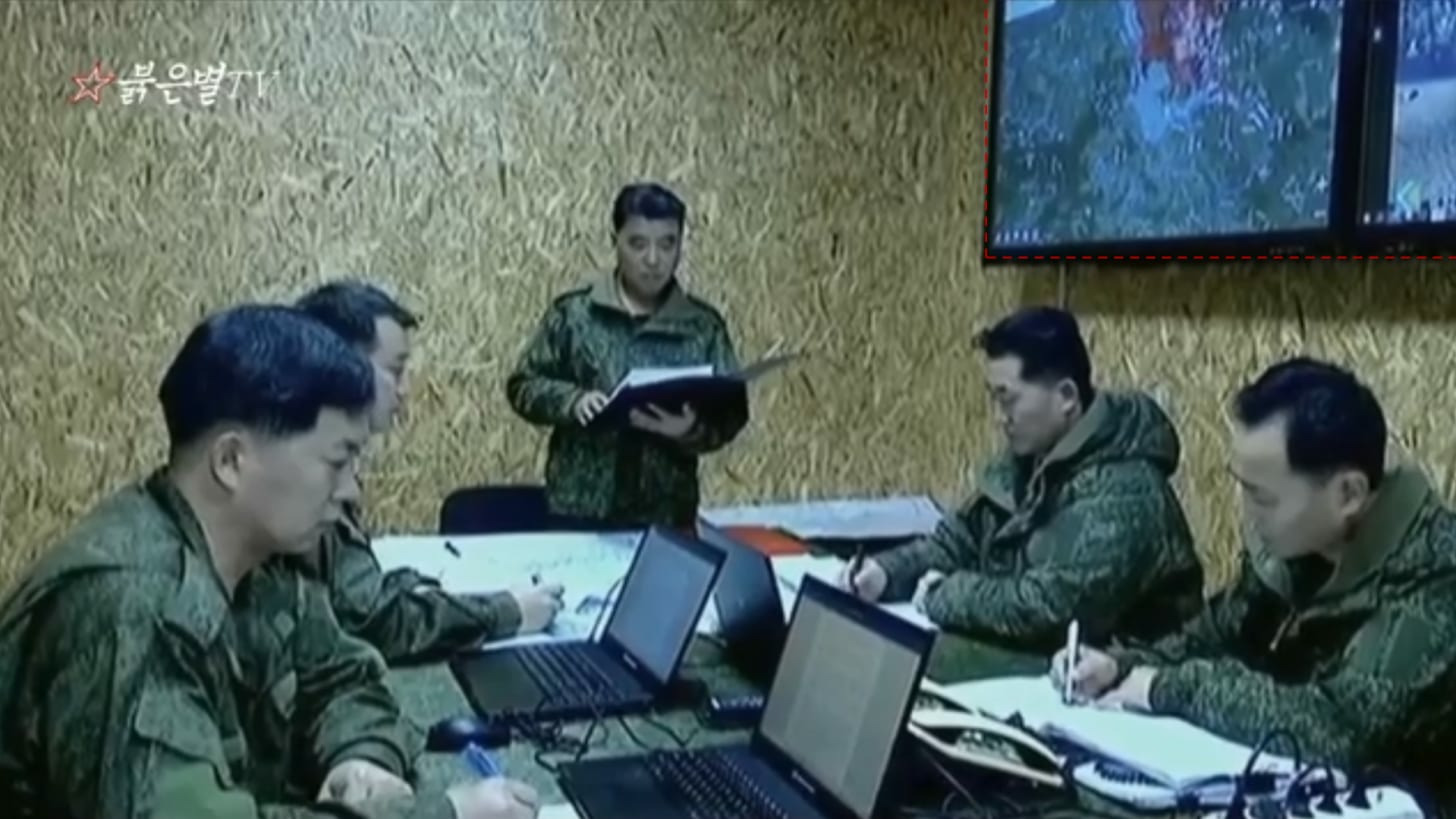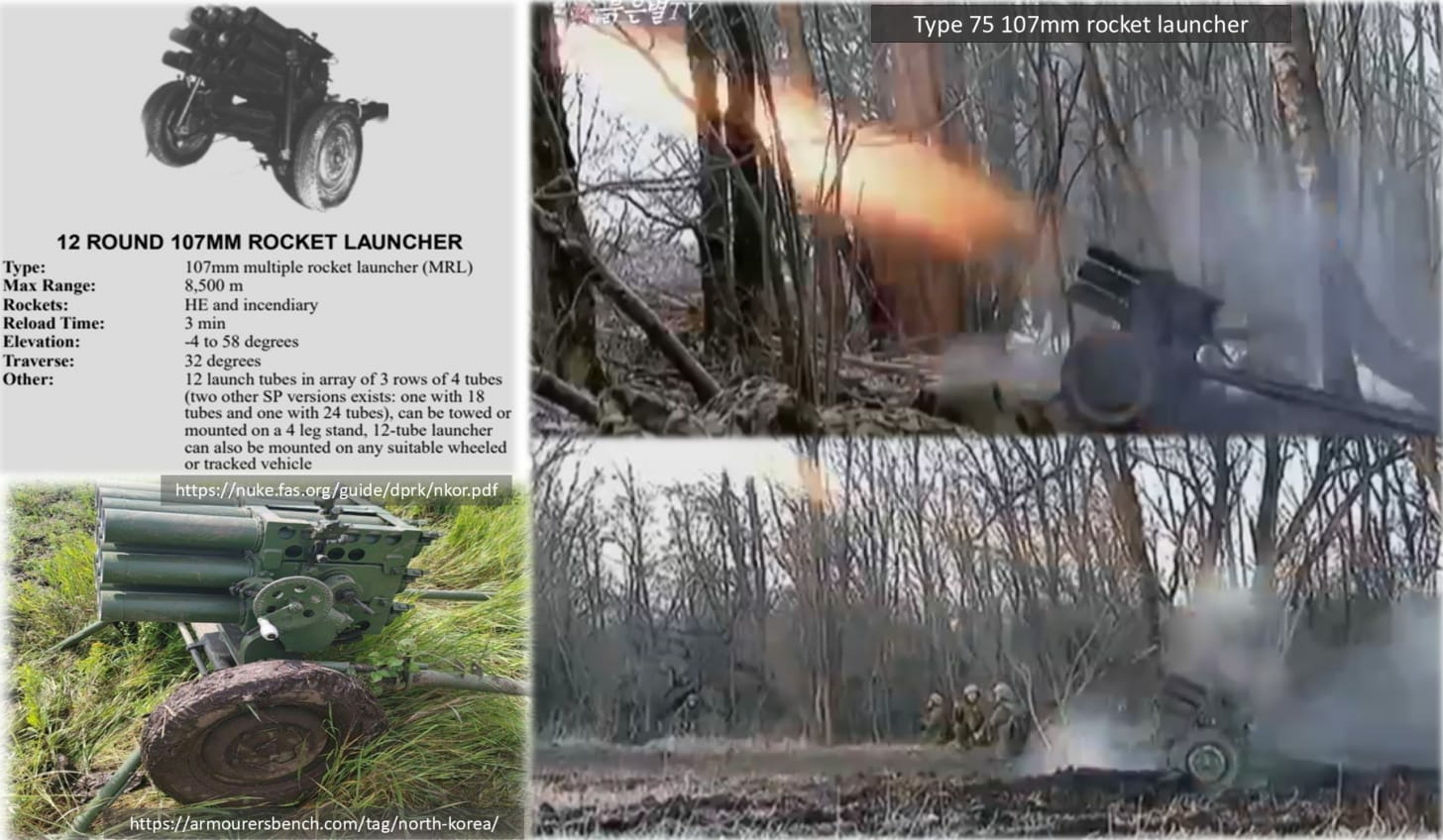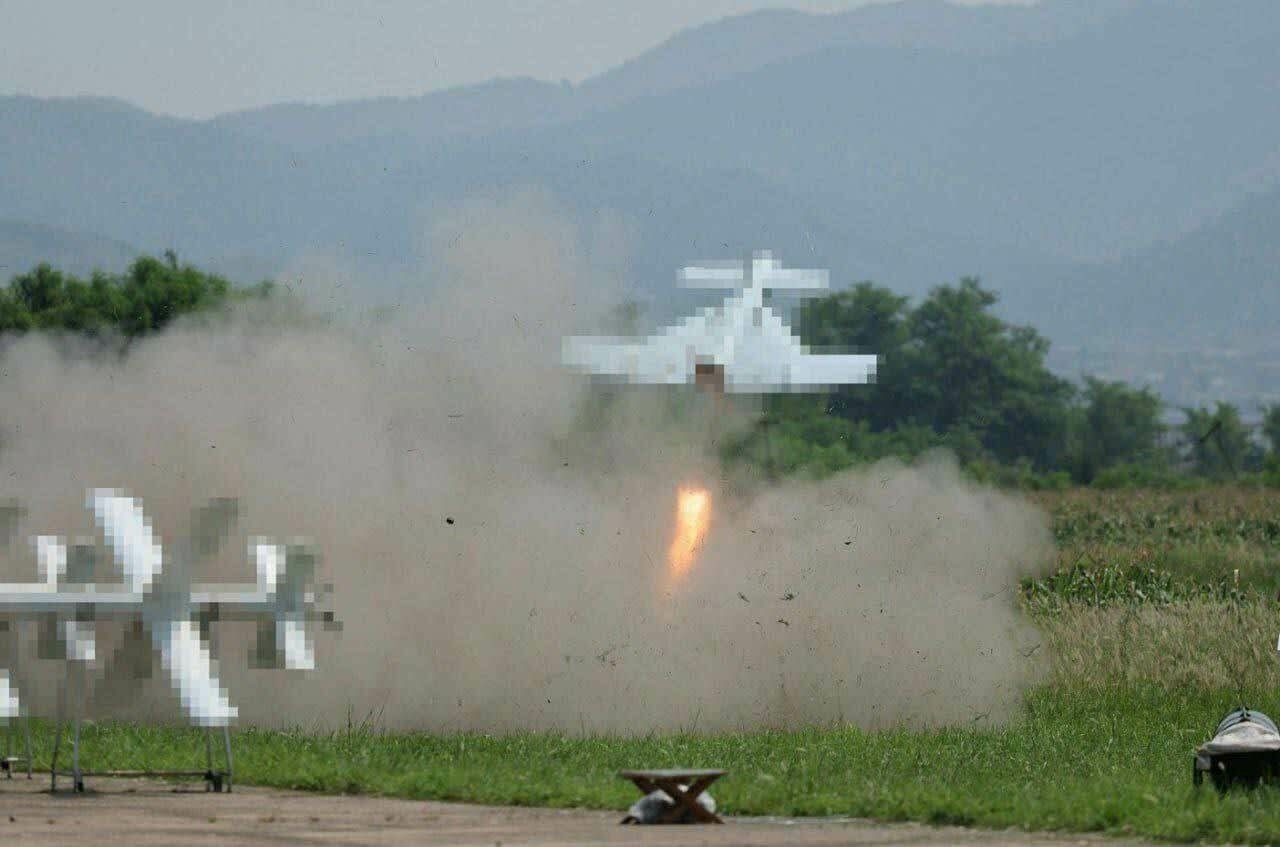North Korea’s direct involvement in the war with Ukraine on Russia side was never about charity or ideological solidarity - it was a calculated move. Beyond the political and economic gains, Pyongyang appears to have extracted practical military lessons, so vital for a force whose training, equipment, and doctrine have lagged far behind modern standards for decades. State-supervised drone trials and public directives to mass-produce attack drones signal that the regime is actively translating these lessons into tangible modernization efforts.
A recent 19-minute propaganda video from Pyongyang hints at the possible direction the military might be heading. While filled with typical propagandist tropes, the combat and training footage reveals some interesting details. It shows multi-layered drone deployments at both tactical and operational levels, mobile ATGMs adapted to light vehicles, and, most notably, expanded ISR and communications capabilities. These moments, captured in the video, form the core of Frontelligence Insight’s analysis breakdown today.
Table of Contents
I. Drone Warfare
II. North Korea’s Anti-Tank Capabilities
III. Battlefield Communications and C2
IV. Infantry Fire Support
V. Looking Past the Propaganda
VI. Summary
This Substack is reader-supported. To receive new posts and support my work, consider becoming a free or paid subscriber.
I. Drone Warfare
By 2025, drones had become the defining weapon of the Russo-Ukrainian war, responsible for more than three-quarters of battlefield casualties. When North Korean forces arrived in Kursk in the latter half of 2024, they entered a war already deep into its “drone phase.” For Pyongyang’s troops, this was uncharted territory: a type of warfare unlike anything they had faced before, and one unfolding on a scale unprecedented in modern combat.
Adapting to this reality required three urgent adjustments. First, North Korean units had to master countermeasures against drones. Second, they needed to learn how to employ drones offensively and defensively - striking equipment and personnel. Finally, they needed to learn how to conduct drone-based surveillance: gathering intelligence from constant aerial observation, processing that data, and integrating it into command-and-control systems
Less than three minutes into the propaganda video, North Korean soldiers are shown practicing anti-drone drills - firing at targets in the sky and countering one drone with another. This is not especially revealing; captured handwritten notes from the battlefield had already confirmed that Pyongyang’s infantry was being trained to shoot down drones.
What stands out, however, is what comes next. The footage eventually shifts to offensive drone operations, with FPV drones striking Ukrainian vehicles and buildings in Kursk Oblast.
One particular scene is especially telling: an FPV pilot wearing goggles is supported by a second operator monitoring the video feed on a nearby device. The wiring setup suggests that a reconnaissance team equipped with quadcopters was likely operating from the same building, feeding real-time surveillance to a local command post.
This detail is significant. It offers concrete evidence that North Korean forces are not only experimenting with drones but integrated tactical UAVs into their combat operations in Kursk. They appear to have trained specialists, and have an understanding of how to link surveillance assets with UAV strike platforms, as well as how to provide ISR support to command.
II. North Korea’s Anti-Tank Capabilities
The propaganda video also offered a rare look at North Korea’s newest Bulsae-4 anti-tank missile system, alongside the slightly older Bulsae-2 (or possibly Bulsae-3) variant. Of particular interest was the adaptation of the Bulsae-4 launch platform for use on light SUVs.
Traditionally, these missiles are fired from the M-2010 armored personnel carrier, North Korea’s local version of the Soviet BTR-80A. In the footage, however, the system has been mounted on a pickup truck. This adaptation suggests that Pyongyang could deploy a larger number of mobile ATGM units at lower cost, bypassing reliance on fewer, more resource-intensive armored vehicles.
The missile itself is designed for precision strikes, featuring large stabilizers and ability to use top-attack trajectory that targets the most vulnerable areas of armored vehicles. An optical seeker allows an operator to guide the missile in real time.
The video also featured a demonstration of the better-known Bulsae-2 (or possibly Bulsae-3), North Korea’s adaptation of the Soviet 9K111 ATGM. In the footage, the missile is fired at a small building, likely part of a controlled training exercise or staged propaganda display. Unlike the newer Bulsae-4, which has a reach of roughly 10 to 25 kilometers, the Bulsae-2’s effective range is far more limited, around 2.5 kilometers.
III. Battlefield Communications and C2
Drones can provide powerful ISR capabilities, but their effectiveness depends on established communication between the command post and ground units that can act on real-time intelligence. In the propaganda video, North Korean forces are seen using the Russian-made Azart tactical radio - a sixth-generation handheld system featuring digital modes, frequency hopping, and GPS/GLONASS synchronization.
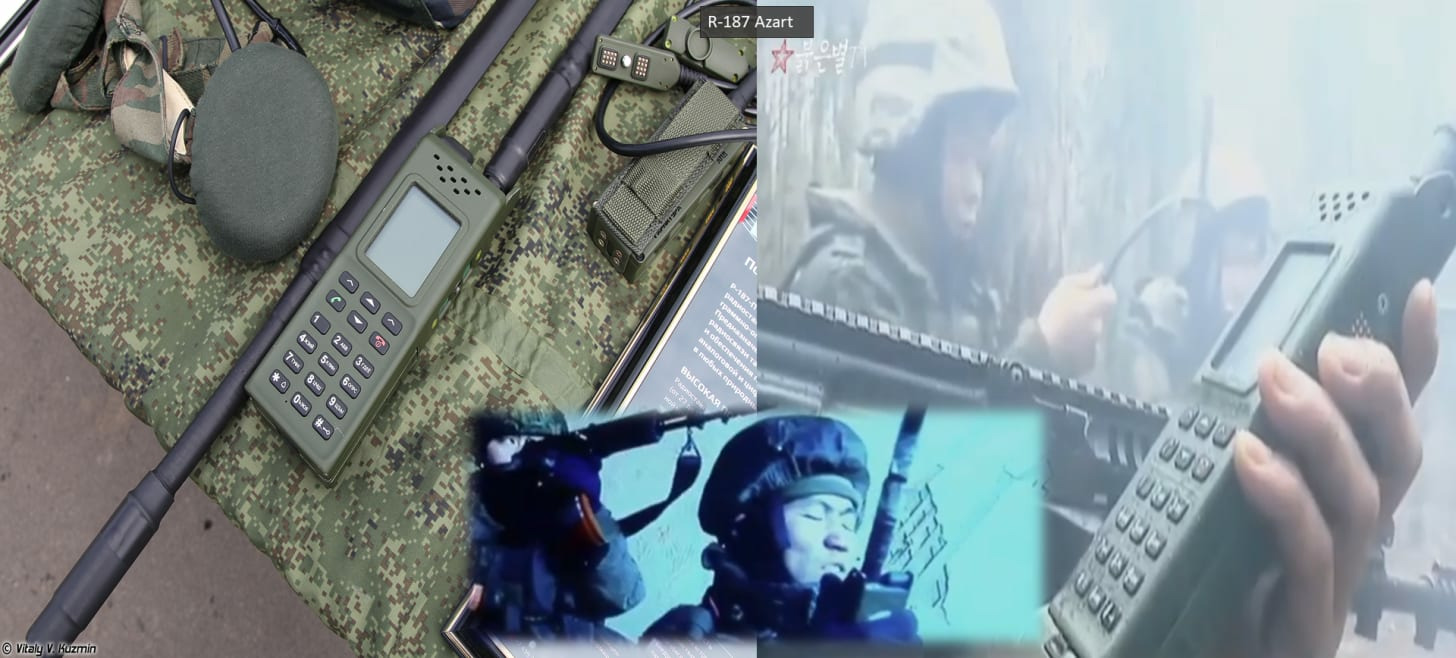
This does not imply that North Korea is unfamiliar with modern communication devices, as many are produced by North Korean company Glocom or Chinese manufacturers, but it does suggest that Pyongyang might have a better idea of practical role played by communications in modern warfare, as well as the battlefield impact of electronic warfare on communications.
The footage also shows command posts employing mapping software alongside interfaces for live drone streaming, creating a makeshift but functional battlefield awareness system.
For analysts and specialists monitoring North Korea, our team recommends keeping an eye on the country’s communications and battlefield awareness systems, as these areas are likely to undergo changes.
IV. Infantry Fire Support
On the conventional battlefield, North Korean units deployed in Kursk appeared largely familiar with standard infantry tactics, following a “by-the-book” approach.
While the footage offers limited insight into infantry units tactics, other combat recordings suggest that North Korean forces have gradually shifted away from the traditional Soviet-style “infantry company in assault” model, instead organizing into smaller tactical teams - a method widely adopted by Russian units in the war.
The propaganda video offered a glimpse of North Korea’s fire support capabilities, showing assets such as Type-75 107mm multiple rocket launchers and light mortars deployed to back infantry operations.
The Type-75 is a North Korean copy of China’s Type-63 multiple rocket launcher and can fire both Korean and Chinese-produced ammunition. It features 12 tubes, capable of launching a salvo up to 8.5 kilometers, though its effective range is considerably shorter. The system’s main advantages are its light weight and ease of deployment, allowing flexible positioning. Its drawbacks, however, are significant: the Type-75 is relatively inaccurate and outdated by modern standards, which keeps it a somewhat exotic weapon on today’s battlefield.
Interestingly, North Korean forces were not the only users of these weapons. Light 60mm mortars and Type-75 rocket launchers of North Korean origin have appeared in Russian units as well. Facing increasing equipment shortages due to attrition, Russian forces have been relying on these systems, which Ukrainian troops have regularly documented since 2024.
V. Looking Past the Propaganda
While this report focuses on the specific propaganda video, it is worth noting several notable issues that showcase Russia’s impact on North Korean military. The partnership seems to be boosting Pyongyang’s capabilities, with potential consequences not just for the balance of power on the Korean Peninsula, but also more broadly. As a frequent supplier of weapons to sanctioned states and non-state actors, including groups such as Hamas, North Korea’s improvements could have implications well beyond the region.
In 2024, North Korean leader Kim Jong Un personally attended a test of new drones, declaring that the country had the “full possibility and potentiality to produce and introduce various types of drones.”
Among presented systems, the first was a loitering munition with X-shaped wings. Footage suggests the system is operator-controlled via an optical channel with radio signal transmission, and launched from tubes in a manner reminiscent of U.S. Switchblade drones.
The second drone had a delta-shaped airframe that visually resembled Israeli Harop . Like the Harop, it is launched with a rocket booster before switching to a propeller engine for sustained flight.
Although it’s unclear whether North Korea’s new drone designs stem primarily from indigenous reverse engineering or direct assistance from Russia, we know that Russia is directly aiding with multiple drone programs. In February 2025, Japan’s public broadcaster NHK reported that Moscow and Pyongyang had struck an agreement under which Russia would provide technical assistance for the development and mass production of multiple drone types. By June, Ukrainian military intelligence chief Kyrylo Budanov publicly stated that Russia was helping North Korea manufacture the Garpiya and Geran: long-range kamikaze drones modeled after Iran’s Shahed-136. That same year, Pyongyang also dispatched specialists to Moscow’s Technopark for Unmanned Aerial Vehicles.
According to an MSMT report, Russia’s support for North Korea has extended well beyond drones. Moscow has reportedly transferred at least one Pantsir air-defense system to the DPRK, while also providing data feedback from North Korean ballistic missile launches - assistance that appears to have improved Pyongyang’s missile accuracy and overall performance. The same report notes that Russia has delivered advanced electronic warfare equipment, including jamming systems, along with operational expertise on how to employ them effectively.
VI. Summary
What began as limited exposure to Russia’s war in Ukraine has grown into a conduit for technology transfer, operational experience, and doctrinal adaptation. The evidence now ranges from loitering munitions and mobile ATGMs to air-defense systems, electronic warfare capabilities, and ballistic missile technologies. For the Korean Peninsula, this trajectory points to the emergence of a more capable, modernized North Korean force, one no longer confined to the outdated playbooks of the mid-20th century. Globally, the risk extends further: Pyongyang has long been a supplier to sanctioned states and non-state actors, and the spread of these tools could amplify instability well beyond Northeast Asia. While it remains uncertain how far North Korea can scale and replicate these lessons across its armed forces, given its severe financial constraints, it is clear that this experience will not be buried.
Links and Sources
1. Frontelligence Insight [@frontel_asia]. (2025, August 25). Video footage from the Korean Central Television. https://x.com/frontel_asia/status/1959896855279759448
2. Min Seok, K. (2017, March 2). What the Glocom scandal tells us about the N. Korean military’s new capabilities. NK News. https://www.nknews.org/2017/03/what-the-glocom-scandal-tells-us-about-the-n-korean-militarys-new-capabilities/
3. Schroeder, M. (2023). North Korean small arms and light weapons: Recognition guide. Small Arms Survey. https://www.smallarmssurvey.org/sites/default/files/resources/North-Korean-Small-Arms-and-Light-Weapons_Recognition-Guide_EN.pdf
4. Marine Corps Intelligence Activity. (1997, May). North Korea country handbook (MCIA-2630-NK-016-97). United States Department of Defense. https://nuke.fas.org/guide/dprk/nkor.pdf
5. Moss, M. (2025, July 13). Russia deploys Type 75s in Ukraine. The Armourer's Bench. https://armourersbench.com/2025/07/13/russia-deploys-type-75s-in-ukraine/
6. Militarnyi. (2025, June 5). Russian military starts arming with 60mm mortars from North Korea. https://militarnyi.com/en/news/russian-military-starts-arming-with-60mm-mortars-from-north-korea/
7. mag_vodogray. (2025). Telegram. [t.me/mag_vodog...](https://t.me/mag_vodogray/12946)
8. Park, B. (2024, November 15). N. Korea's Kim orders mass production of suicide attack drones: KCNA. Yonhap News Agency. https://en.yna.co.kr/view/AEN20241115001052315
9. Kang, T. (2025, February 10). North Korea likely to produce drones with Russian support this year. Radio Free Asia. https://www.rfa.org/english/korea/2025/02/10/north-korea-russia-drone-support
10. Altman, H. (2025, June 9). Russia giving North Korea Shahed-136 attack drone production capability: Budanov. The War Zone. https://www.twz.com/news-features/russia-giving-shahed-136-attack-drone-production-capabilities-to-north-korea-budanov
11. Sokolin, A. (2025, February 13). North Korean aviation officials tour leading Russian drone training center. NK News. https://www.nknews.org/2025/02/north-korean-aviation-officials-tour-leading-russian-drone-training-center/
12. Multilateral Sanctions Monitoring Team (MSMT). (2025). https://msmt.info/Publications/detail/MSMT%20Report/4195
